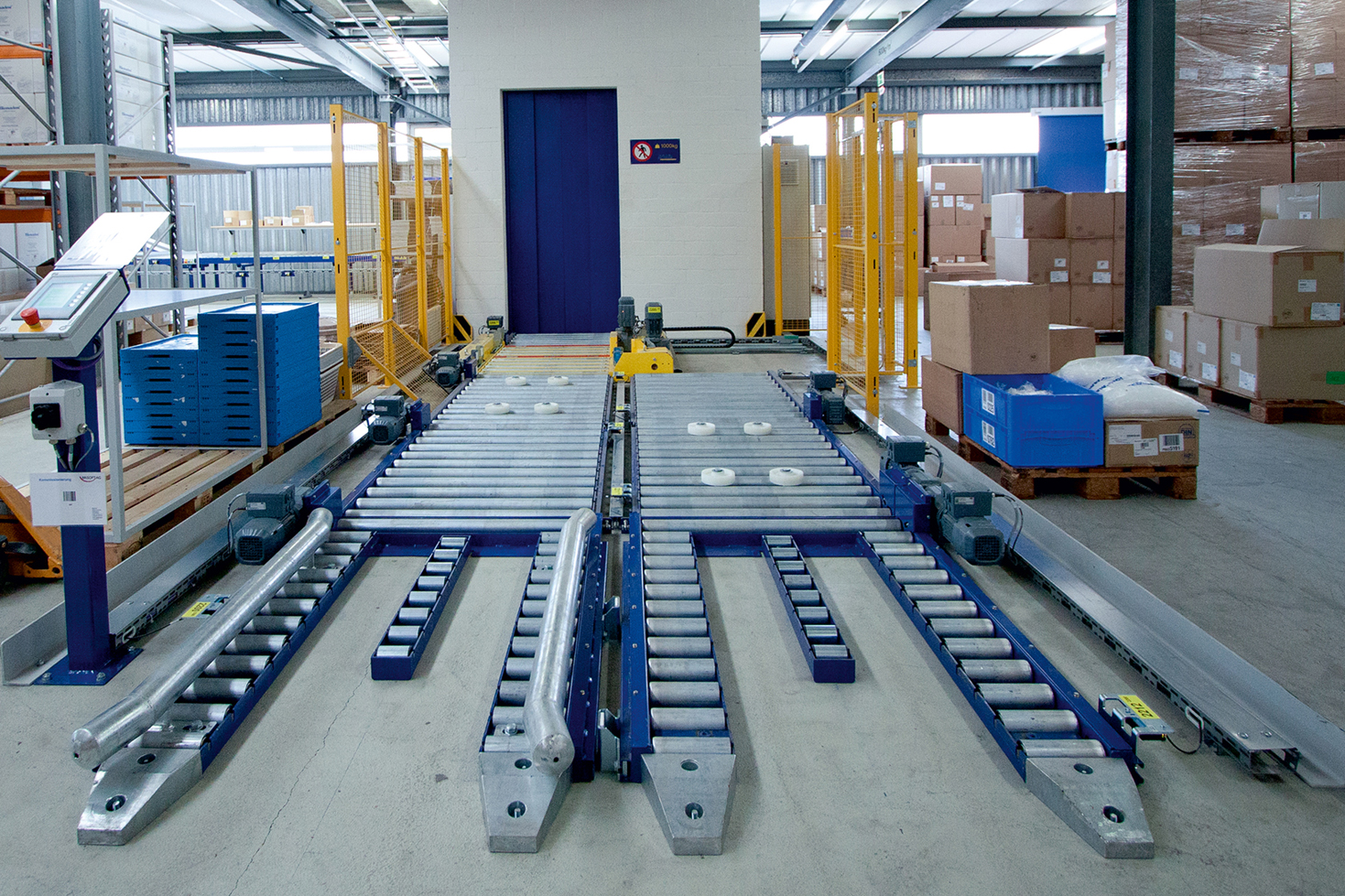Pallet Conveyor Systems And Their Models
To quickly get a product from one area to another, most facilities use conveyors. Conveyors are found in many factories that use the assembly line method to order products. However, conveyors have many uses and are not just restricted to an assembly line production facility. Pallet conveyors, also known as palletized transport systems, are used to move pallets from one area to another for a variety of purposes and come in four styles.
These styles are the belt conveyor, roller conveyor, the chain conveyor and the cam driven. All four styles have the ability to move heavily loaded pallets without much difficulty. However, the most common styles that are used are the roller and the chain. Some will even use a combination of the roller and the chain conveyors. Roller and chain styles can be assembled to a specification that is needed.
The more standard sizes however are with the width ranging from a few inches to 12 ft and length ranging from 5 ft and 8 ft. Although it is not rare to see either of these conveyors reaching a length as high as 40 ft. The pallet conveyors are designed with a common width size of 36 inches to 60" to accommodate the common pallet sizes. 4-gauge steel channels are used for the frames for both styles of conveyors.
For the roller conveyors the rollers are constructed of 11 gauge steel and are typically 2 1/2 in diameter. The speeds will also vary with typical speeds being from 30 to 60 feet per second. For those that want it, a speed of 150 feet per second can be obtained. The spacing between the rollers range from 3 inches to 12 inches. For the chain conveyor sizes run from RC 40, 50, 60 or 80. The 80 size is the heaviest duty of the chain conveyors. The drive of the chains is from 1/4 HP to 5 HP. The horsepower motors are commonly 3 phases but a single-phase motor can be acquired.
For those that use a combination of roller and chain conveyors a cross transfer is used. This cross transfer will move the pallet 90 degrees from one style of conveyor to the next, either starting on a roller and ending on a chain or starting on a chain and ending on a roller. Either way the cross transfer works the same way only in reverse. If moving from the rollers to chain the chain section will be lowered and when moving from chain to roller the chain section will be raised.
To keep the roller and chain pallet conveyors moving smoothly they must be lubricated. The downside with this is that buildup can occur. Buildup can cause the conveyor to fail to move the pallets as smoothly as possible. To cut down on buildup, they should be cleaned regularly and new lubricant placed on them. This can cut into productivity and therefore should be preformed routinely.
In Order To Find Out More Details On Conveyor Systems Singapore Please Be Touch With Us Today Onwards..!
These styles are the belt conveyor, roller conveyor, the chain conveyor and the cam driven. All four styles have the ability to move heavily loaded pallets without much difficulty. However, the most common styles that are used are the roller and the chain. Some will even use a combination of the roller and the chain conveyors. Roller and chain styles can be assembled to a specification that is needed.
The more standard sizes however are with the width ranging from a few inches to 12 ft and length ranging from 5 ft and 8 ft. Although it is not rare to see either of these conveyors reaching a length as high as 40 ft. The pallet conveyors are designed with a common width size of 36 inches to 60" to accommodate the common pallet sizes. 4-gauge steel channels are used for the frames for both styles of conveyors.
For the roller conveyors the rollers are constructed of 11 gauge steel and are typically 2 1/2 in diameter. The speeds will also vary with typical speeds being from 30 to 60 feet per second. For those that want it, a speed of 150 feet per second can be obtained. The spacing between the rollers range from 3 inches to 12 inches. For the chain conveyor sizes run from RC 40, 50, 60 or 80. The 80 size is the heaviest duty of the chain conveyors. The drive of the chains is from 1/4 HP to 5 HP. The horsepower motors are commonly 3 phases but a single-phase motor can be acquired.
For those that use a combination of roller and chain conveyors a cross transfer is used. This cross transfer will move the pallet 90 degrees from one style of conveyor to the next, either starting on a roller and ending on a chain or starting on a chain and ending on a roller. Either way the cross transfer works the same way only in reverse. If moving from the rollers to chain the chain section will be lowered and when moving from chain to roller the chain section will be raised.
To keep the roller and chain pallet conveyors moving smoothly they must be lubricated. The downside with this is that buildup can occur. Buildup can cause the conveyor to fail to move the pallets as smoothly as possible. To cut down on buildup, they should be cleaned regularly and new lubricant placed on them. This can cut into productivity and therefore should be preformed routinely.
In Order To Find Out More Details On Conveyor Systems Singapore Please Be Touch With Us Today Onwards..!


Comments
Post a Comment